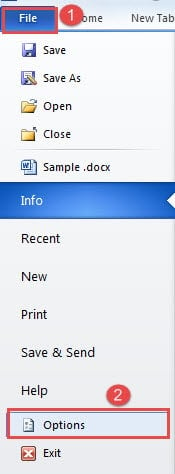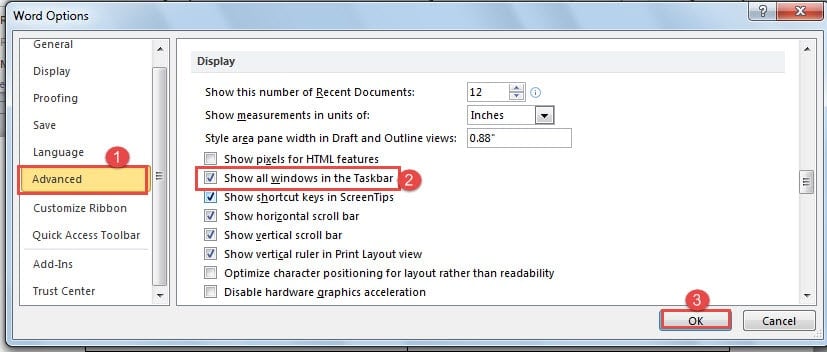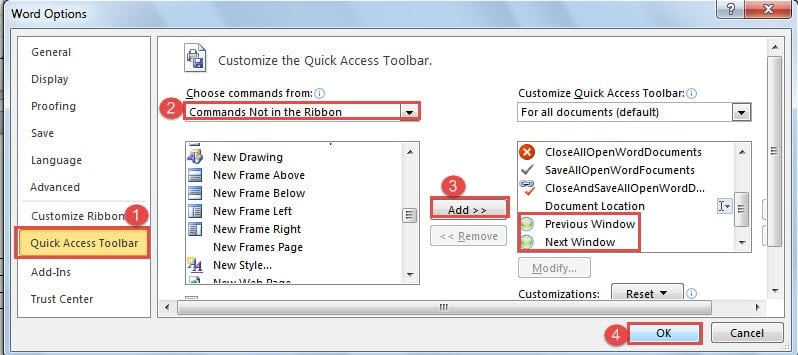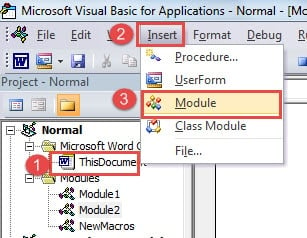In the following article, let’s go through the 6 quick and awesome ways to switch between open Word document windows.
Now and then, it’s quite often to conduct multiple tasks at one time. And when it comes to Word, opening several documents at the same time is not unusual. However, living in an age when time is one of our greatest assets, to do things quick and fast is required everywhere. So, a little time squeezed can mean a lot to us. Now let’s take a look at how we can save time by quickly switching between document windows.
Method 1: Use Windows Taskbar
Once you hover your cursor over the Word icon on Windows taskbar, you can see all currently open documents displayed in small windows, such as below:![]()
You just need to click on the target window to have it maximized. This is perhaps the most commonly used way to complete the task. However, this method is based on some preset settings. To make sure all document windows can be shown on the taskbar, here are what you have do first:
- In Word, click “File”, and then “options” to open “Word Options” dialog box.
- Next, click “Advanced”.
- Then scroll down to “Display” page and check the “Show all windows in the Taskbar” box.
- Lastly, click “OK”.
Method 2: Change Windows inside Word
Inside Word, there is already the feature for you to jump to your wanted document window.
- Firstly, click “View” tab.
- Then click “Switch Windows” in “Window” group.
- On the drop-down list, there are names of all open documents. Just click on the name is all you need to do.
Method 3: Add Commands to “Quick Access Toolbar”
Word has some hidden functions that need you to bring it out. For instance, you can choose to add either “Previous Window” or “Next Window” to “Quick Access Toolbar”.
- To begin with, go to open “Word Options” dialog box through steps in method 1.
- Only this time, you choose to click “Quick Access Toolbar”.
- Then continue to choose “Commands Not in the Ribbon”.
- Next find and click on either “Previous Window” or “Next Window”.
- And click “Add”.
- At last, click “OK”.
Now click on the command to go to the right window. If you are a keyboard shortcuts guy, you can save the adding command time by remembering the combination of “Ctrl+F6” or “Ctrl+ Shift+ F6”.
Method 4: Press “Alt+ Esc”
Press “Alt” and hold on. Then press “Esc” to cycle through open document windows. And stop on the right one by releasing “Alt”.
Method 5: Press “Alt+ Tab”
Here is another similar combination. That is to press and hold on “Alt”, and press “Tab”. Then all windows including those of other programs will show on the screen. Now press “Tab” to pick one and finally loose “Alt”.
Method 6: VBA Codes
- Firstly, press “Alt+ F11” to open the VBA editor.
- Then you can click “ThisDocument”.
- And click “Insert” on toolbar.
- Then choose “Module”.
- Next, paste the following codes on the right side of editing region.
Sub AcivateNextDocumentWindow() ' In case there is an error, go to ProcessError. On Error GoTo ProcessError ' Activate the next document window. If Windows.Count > 1 Then Dim objWindow As Window Set objWindow = ActiveDocument.ActiveWindow.Next objWindow.Activate End If Exit Sub ProcessError: ' Whenever error occurs, activate the first window. Windows(1).Activate End Sub
- And you’d better add a button for this macro so s to use it next time. For detailed steps, please read How to Quickly Invoke another Application from MS
Stay Cool When Word Fails
Throughout all these years’ experience of using Word, we know it can fail sometimes despite of its powerful features. Yet, when it corrupts, most people get panic and it’s the common reflex. As new technologies coming out all the time, now you don’t have to worry about lose your file forever. There is the option to purchase a damaged Word document recovery tool.
Author Introduction:
Vera Chen is a data recovery expert in DataNumen, Inc., which is the world leader in data recovery technologies, including Excel file damage repair and pdf repair software products. For more information visit www.datanumen.com





